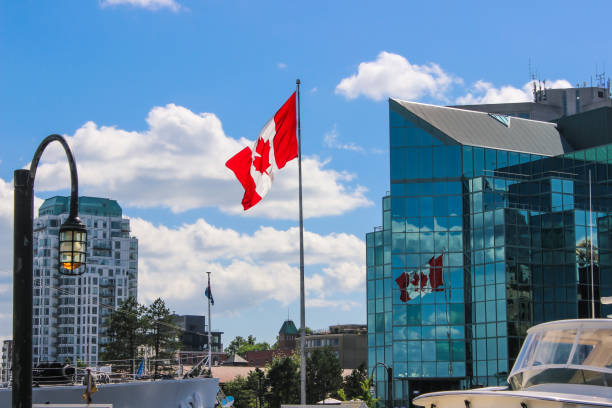Securing a high paying job abroad through visa sponsorship is a major goal for many professionals. This detailed guide explains the most important visa types that could lead to annual salaries of $85,000 or more and how to position yourself successfully. We highlight the main visa categories, tips to stand out, in demand occupations, global trends, and essential steps to pursue these life changing opportunities.
Understanding the Main Work Visas Leading to High Earnings
Several powerful visa categories worldwide can result in six figure salaries. To qualify, candidates generally need a job offer in a skilled occupation, certain qualifications or experience, and sponsorship from an approved employer.
One key route is the H1B visa in the United States. It allows American employers to hire foreign professionals in specialized fields, often involving technology, engineering, finance, or health care. Applicants normally need a bachelor’s degree or higher in a relevant discipline and must be selected in the annual H1B cap lottery. It is common that these roles start with salaries near or above $85,000.
For professionals considering the United Kingdom, the Tier 2 General visa enables non EU nationals to work in skilled jobs. This visa requires a minimum English language ability, a sponsoring employer, and a salary threshold that often approaches $85,000 for senior or technical roles in engineering, finance, or technology.
Australia offers the Temporary Skill Shortage visa for both short term up to two years and medium term tracks. The medium term stream allows skilled applicants to work up to four years and can lead to permanent residency. Visa holders working in high demand occupations such as architects, engineers, and healthcare professionals often earn well over $85,000 Australian dollars annually.
Young travelers can take advantage of working holiday visa programs in countries such as Australia, Canada, and New Zealand. While these are usually for temporary travel work and less likely to reach $85,000 per year, they are stepping stones toward more permanent skilled employment or employer sponsorship.
Intra Company Transfer visas allow multinational companies to move employees between branches in different countries. Executives and specialists moving to major markets including the US, UK, or Canada can maintain six figure salaries with visa support from their current employers.
For a Europe wide approach, the EU Blue Card is a visa option similar to the US H1B aimed at protecting rights and standardizing compensation. To apply, applicants need a job offer in the EU accompanied by a wage significantly above the national average, often near one and a half times the average or more, which in many EU cities translates to annual earnings well in excess of $85,000 euros.
Australia also offers the Employer Nomination Scheme visa, where a permanent employer can nominate a skilled candidate for long term work and residency. This often leads to higher salaries and longer term stability.
Choosing the Ideal Visa Type for Your Plans
To start, you should compare each visa type against your personal goals. The H1B and EU Blue Card prioritize skilled employment with high pay but come with application caps or restrictive quotas. In the UK, Tier 2 and Australia’s Temporary Skill Shortage and Employer Nomination Scheme visas offer more direct routes into permanent living and working abroad. Intra company transfers work best for candidates already with multinational employers.
If you intend to travel and later convert work experience into a skilled job offer, it is useful to consider working holiday visas. But keep in mind many of these start at lower pay.
Building a Strategy That Lands You the Job
Once you understand the visa options, the next step involves positioning yourself as a top candidate. Begin by analyzing skills in demand within your target country. Study local labor market data to learn which roles pay $85,000 or more. Typical categories include technology, engineering, finance, biotech research, health sciences, and senior level management.
Then tailor your resume to highlight relevant skills and experience and speak the local terminology. Use keywords from the visa eligible job postings and narrate achievements using measurable results. A cover letter should briefly introduce your immigration plans and confirm that you already meet or exceed key visa requirements.
These days, much job searching is done online. Sign up for job portals such as LinkedIn, Indeed, Glassdoor, and local niche platforms where employers explicitly state that visa sponsorship is available. Use filters including employer size and global reach, as large multinationals often sponsor visas.
Networking also plays a vital role. Connect with alumni, colleagues, and members of professional associations. Many visa sponsored job offers arise through referrals made by existing employees. Attend global conferences, webinars, and virtual meetups specific to visa eligible roles.
As you apply, regularly refine your pitch. Include visa wording such as H1B, Tier 2, Blue Card, or Temporary Skill Shortage sponsorship in your cover letter subject lines. Have professional and immigration documents ready. Respond quickly to interview requests and mention your visa eligibility briefly but confidently.
Fields Where Sponsorship Roles Are Rising
While technology roles remain fundamental, candidates are seeing sponsorship opportunities in many other fields. In the US and EU, biotech research positions are opening with salaries exceeding $85,000.
Environmental science researchers are increasing in demand as global emphasis on climate action grows. In specialized English speaking countries, salaries in research and consulting often exceed six figures.
Marketing, technology, and strategy roles within global firms also sponsor foreign professionals at high compensation levels. Sales professionals with language or cross border expertise can tip over the $85,000 threshold.
In construction, skilled trades offer sponsorship through programs such as the US construction visa program. Workers may relocate with paid relocation bonuses that offset initial costs and reach six figure earnings.
Hospitality, finance, accounting, insurance, pharmaceuticals, logistics, shipping, architecture, engineering, nursing, medicine, academia, and senior corporate roles all include opportunities with employer visa sponsorship at high pay scales.
Insider Case Studies That Inspire
Consider the story of a Nigerian data analyst living in Abuja who earned 350000 naira a month. After months of targeted applications to remote jobs in Canada, he landed an employer sponsored data analyst role paying around $85,000 Canadian dollars. He began working remotely and then migrated to Canada under employer sponsorship. By repositioning his resume with applicant tracking system keywords, applying broadly, and being consistent, he secured both the role and relocation. This shows that careful planning, remote work, and persistence can open pathways to foreign earnings.
Other real world experiences show that US employers take up positions such as cloud engineer, devops engineer, data specialist, tax associate, software developer, registered nurse, and healthcare researchers, and offer H1B, TN, or H2B sponsorship. Nurses, software professionals, accountants, and engineers with licensure regularly exceed $85,000 in compensation packages.
In the UK, senior engineers, consultants, financial analysts, and doctors also receive visa sponsorship at high salary bands. Canada continues to be welcoming to skilled migrants, with employer offers leading to express entry and permanent residency.
Steps to Take Now
First, research the visa type you qualify for and target countries where your skills match high demand. Learn the salary thresholds and minimum qualifications needed for $85,000 level roles.
Second, update your resume and LinkedIn profile for each country. Include visa ready messaging and quantify your experience. Highlight remote or cross border work that demonstrates adaptability.
Third, search and apply widely on global job boards. Use smart filters and set alerts for visa sponsorship roles. Set referral targets and connect directly with recruiters.
Fourth, prepare for interviews. Be ready to explain visa timing, salary expectations, and relocation timeline.
Fifth, schedule time to gather paperwork such as transcripts, resumes, employment records, professional licenses, reference letters, and language test scores such as IELTS, TOEFL, PTE, or equivalent if needed.
Finally, use professional networks, immigration forums, associations, and if necessary, consult legal advisers experienced in global employment immigration.
What to Expect Along the Visa Path
Applications for H1B, Tier 2, Temporary Skill Shortage, Blue Card, or other skilled visas involve background checks, labor market testing, and documentation. Each process varies in timeline and complexity. For example, H1B is capped and often needs submission in April for a start in October. Tier 2 requires a certificate of sponsorship from the employer ahead of visa application. EU Blue Card requires an employment contract and evidence showing salary threshold above average.
Work with your future employer to ensure they file paperwork promptly. Be prepared for waiting periods and administrative processing. Understand that appeals or additional evidence may be requested.
Your relocation budget should include visa fees, medicals, travel, and initial living costs. Many sponsorship packages include allowances or reimbursements but not all do.
Staying Compliant in Your New Role
Once you relocate, review your work contract and visa conditions carefully. Stay aware of entitlement rights, proof of address, tax registration, and healthcare requirements in your new country. Make time to integrate into the professional community.
Long Term Career Perspective
Most skilled visas allow extensions or transitions to permanent residency. The EU Blue Card leads to longer term EU stay. Australia’s Employer Nomination Scheme leads to permanent residency. Canada’s employer sponsored work paves the way to permanent residence. And after years on H1B, you may be eligible to apply for a United States green card.
Consider continuous skill learning, investments in professional networks, and citizenship or long term visa options in your country of residence.
Steps to Take After Getting Visa Sponsorship
Securing a job offer with visa sponsorship is a major success, especially if the offer includes a high salary such as eighty five thousand dollars per year. But after receiving sponsorship, it is important to follow the right steps to make your relocation smooth and successful. Here are the exact steps you should take:
One. Get the Official Sponsorship Letter or Certificate
Your employer will provide a formal document confirming they are sponsoring your visa. This includes job details like your role, location, salary such as eighty five thousand dollars or more, and your expected start date.
Two. Apply for the Work Visa
Visit the immigration website of the country you are moving to and start your visa application. You will be required to upload several documents including:
-
Valid passport
-
Sponsorship letter
-
Employment contract
-
Educational certificates
-
Proof of experience
-
Language test results if needed
-
Medical records
-
Police clearance certificate
Make sure all documents are correct and clearly scanned.
Three. Pay Visa Fees and Attend Appointments
Depending on the country, you may need to:
-
Pay application or immigration fees
-
Book and attend a biometrics appointment
-
Attend a visa interview with the embassy
Keep your payment receipts and follow all instructions given by the visa processing center.
Four. Wait for Your Visa Approval
Visa processing may take a few days or several weeks. During this period:
-
Track your application online
-
Stay in touch with your employer
-
Do not make any travel plans until your visa is granted
Five. Prepare for Travel
Once your visa is approved:
-
Book your flight
-
Arrange accommodation
-
Pack your documents such as passport, visa approval, job offer, and emergency contacts
-
Research what life is like in your new city, including the cost of living
Six. Manage Your Finances
Before moving:
-
Open an international bank account or check with your bank about global usage
-
Budget for your first month’s expenses
-
Understand how your salary such as eighty five thousand dollars per year will be paid
-
Learn about taxes, insurance, and retirement savings in your new country
Seven. Organize Personal Life at Home
Before departing:
-
Resign from your current job professionally
-
Cancel housing contracts, subscriptions, or utilities
-
Inform schools or institutions you are part of
-
Pack personal items, medicine, and clothing based on the destination’s weather
Eight. Know Your Visa Conditions
Each visa has rules. Understand yours:
-
How long is the visa valid
-
Can you bring dependents
-
Are you allowed to change employers
-
What happens if your job ends early
Staying compliant keeps your immigration status safe.
Nine. Arrive and Settle In
On arrival:
-
Contact your employer and complete onboarding
-
Register for a tax number or social ID
-
Open a local bank account
-
Find local transportation routes
-
Explore the city, find grocery stores, clinics, and housing
Ten. Plan Long Term
If you plan to stay beyond your work visa:
-
Learn about permanent residency options
-
Know how to renew your visa
-
Take extra professional courses if needed
-
Build a network and grow your career
-
Track your income such as eighty five thousand dollars per year for taxes and immigration
Conclusion
Securing an $85,000 plus job with visa sponsorship is fully achievable with careful planning, informed strategies, and perseverance. Whether using H1B in the United States, Tier 2 in the United Kingdom, Blue Card in Europe, Temporary Skill Shortage and Employer Nomination Scheme in Australia, or intra company transfers, you can match your skills to global demand.
Position yourself as a top candidate by tailoring resumes, establishing networks, loading search alerts, preparing documentation, and working directly with global employers. Understand visa timelines, fees, and rights once you move.
Prepare now, apply vigorously, trust the process, and your vision of a high paying global career with visa sponsorship can become reality.










